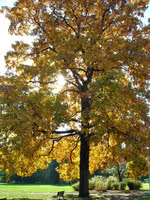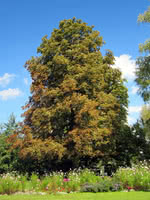Mon-Fri 9am - 5pm Mountain time
Horse Chestnut vs Shagbark Hickory
Carya ovata
Aesculus hippocastanum
CUSTOM GROW
Shagbark Hickory is a unique tree both for its looks and uses. Its bark peels into long thin vertical strips giving it a shaggy appearance. This and its golden fall leaves make it a gorgeous looking tree. This species produces tasty hickory nuts once mature. Hickory smoke is also treasured for curing meats and its generally fantastic smell.
This tree is best planted away from any buildings due to a deep taproot and large size. Many people remark on the unusual taproot for this tree that can be over 6 feet deep while the plant only has 2 feet of top growth.
Horse Chestnut is a medium sized deciduous tree that is native to Greece but has been grown in North America for hundreds of years. It produces large nuts.
A top CO2 absorbing species. Experts think this tree may help climate change more than others.
Shagbark Hickory Quick Facts
Horse Chestnut Quick Facts
Toxicity: most parts of plant are toxic

